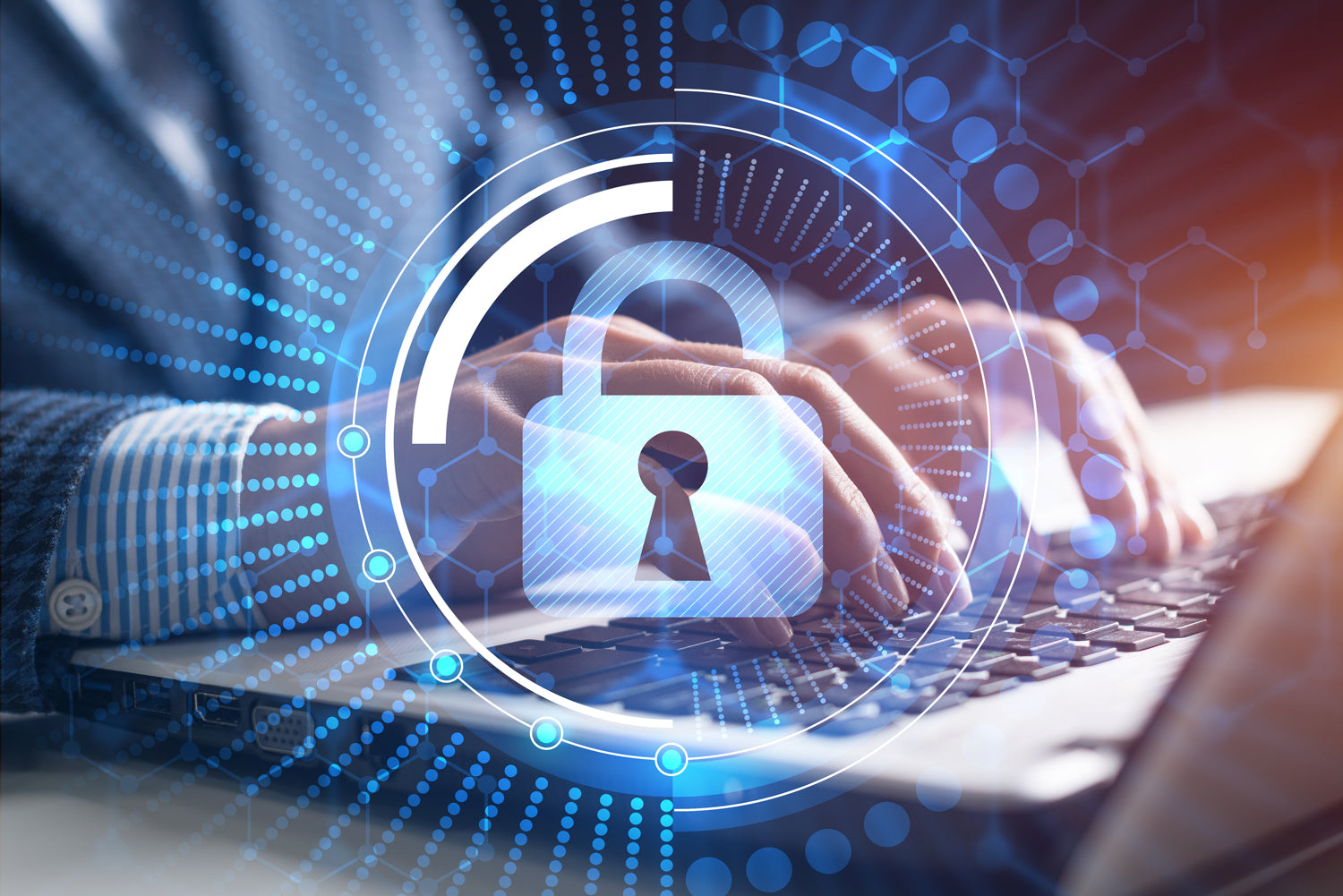
Running a business in Australia today means juggling a lot, customers, cash flow, staffing, compliance, and more. There’s one risk that’s growing fast and often overlooked: cyber threats. From stolen customer data to ransomware locking up your systems, a cyber incident can be costly and disruptive.
The good news? You don’t need to be a tech expert to manage this risk. By treating cyber security as part of your business’s risk management strategy, you can protect your business, your customers, and your reputation.
This article takes a look at what that means and introduces the government recommended risk mitigation framework, the Essential Eight.
What is risk management?
Risk management is about being proactive. It is the process of identifying potential threats to your business and putting practical steps in place to minimise their likelihood and the impact. Whether it is financial, legal, physical, or digital every business faces risk.
For cyber security, this means understanding the risks your business faces and implementing measures to protect against them. This approach ensures that your business can continue to operate smoothly, even when faced with those unexpected challenges.
Risk management framework
A risk management framework is a structed way to:
- Identifying risks to systems, data, and operations
- Assessing the likelihood and impact of those risks
- Implement controls to reduce the risk
- Monitor and review the effectiveness of those controls
Think of it as a checklist that helps you stay ahead of problems before they happen. Cyber security frameworks follow this same approach, tailored to digital threats.
For example, a sole trader managing client data on a laptop might:
- Identify the risk of data theft
- Assess how likely it is (e.g., if the laptop is used in public places)
- Apply controls (e.g., encryption, password protect, MFA)
- Review those controls regularly (e.g., update software, change passwords)
These frameworks ensure that security measures are not just reactive but proactive, helping businesses stay resilient in the evolving cyber threat environment. However, risk management frameworks are not all the same and should be adjusted to suit the size, industry, and risk of the business.
What are controls?
In risk management, controls are the tools or actions you use to deal with risks. Some controls reduce the chance of something going wrong (preventative), while others reduce the damage if it does (responsive).
- Preventative: Using multi-factor authentication makes it harder for criminals to break in
- Responsive: Keeping regular backups means you can recover faster after an attack and minimise any potential damage.
You don’t need to eliminate all risk, that’s impossible, but with the right controls, you can reduce it to an acceptable level.
Where the Essential Eight Fits In
To make cyber security risk management easier, the Australian Cyber Security Centre (ACSC) developed a set of recommended controls known as the Essential Eight. It is a risk management framework specially designed to help Australian businesses protect themselves from cyber threats. The Essential Eight is a cyber security framework developed by the Australian Cyber Security Centre (ACSC) to assist business owners to protect themselves against cyber threats. It outlines eight key mitigation strategies, grouped into three objectives: prevent attacks, limit impact, and ensure data availability. Regulators and courts use the essential eight as the standard for measuring if a business is compliant with their obligations.
The Essential Eight is made up of eight main controls including:
|
Strategy |
What It Means |
Why It Matters |
|
Application Control |
Only allow approved apps and programs to run on your systems. |
Stops malware from running in the first place. |
|
Patch Applications |
Regularly update software (e.g., browsers, Microsoft Office, PDF readers). |
Fixes security holes that hackers can exploit. |
|
Configure Microsoft Office Macro Settings |
Block risky macros from running in documents. |
Macros are a common way for viruses to get in. |
|
User Application Hardening |
Disable unnecessary features in apps (like Flash, ads, Java). |
Reduces the number of ways hackers can get it. |
|
Restrict Admin Privileges |
Only IT/admin staff should have full access to systems. Regular users get only what they need. |
Limits the damage if someone's account is hacked. |
|
Patch Operating Systems |
Keeps Windows, MacOS, or other operating systems updated. |
Prevents known security flaws from being used against you. |
|
Multi-Factor Authentication (MFA) |
Require users to enter a second code (e.g., from an app or SMS) when logging in. |
Makes it much harder for hackers to break into accounts. |
|
Regular Backups |
Automatically back up your data, and test restoring it. |
Essential if you're hit by ransomware or system failure. |
What is cyber security?
Cyber security involves practices, processes, and technologies designed to protect your business’s digital information from unauthorised access, attacks, and damage. This includes everything from customer data, patient or client files, and financial records to email communications and website.
Comparing Cyber Security and Physical Safety Frameworks
Most small business owners already know about their responsibilities under workplace health and safety (WHS) laws. You identify risks, manage them, and train your staff to stay safe.
The Essential Eight is the same approach, just applied to the digital workplace. It’s about doing what’s reasonable and practical to protect your systems and data, so your business can continue operating even when the worst happens.
Cyber security as Risk Management
Cyber security fits into risk management by helping you understand the digital risks your business faces and implementing measures to protect against them. This approach can save your business from costly disruptions and help maintain customer trust. A risk mitigation strategy can help any business owner:
- Identify vulnerabilities
- Implement protective measures
- Respond quickly to incidents
Common Cyber Threats
- Phishing: Fake messages posing as a trusted source to steal sensitive information
- Ransomware: Malware that locks data and demands payment for its release.
- Extortion: Threats to leak or destroy data if demands aren’t met, often linked to ransomware attacks.
- Data Breaches: Unauthorised access to confidential information, often stolen or leaked
- Malware: Malicious software designed to disrupt, damage, or spy on systems
- Insider Threats: Risks from employees or contractors misusing access, intentionally or accidentally.
The role cyber security plays
By integrating cyber security into your risk management strategy, you can ensure your business continues to operate even in the face of cyber threats. This involves regular updates to your security measures, training employees to recognise potential threats, and having a plan in place to respond to incidents quickly.
Building trust
Customers trust businesses that protect their sensitive and personal information. By prioritising cyber security, you can demonstrate your commitment to safeguarding their data, enhancing your reputation and customer loyalty.
Working with a TSSP
Partnering with a Technology Solutions and Security Provider (TSSP) can be a valuable strategy for managing cyber security risks. TSSPs offer a range of services, from IT support and consulting to managed services and cloud solutions. They bring expertise and resources that businesses, including sole traders, might not have in-house, helping to implement and maintain robust cyber security measures.
Conclusion
Cyber security should be an essential part of risk management for all businesses. It helps to protect sensitive financial or health records, ensures business continuity, and builds trust. By understanding and addressing the cyber risks your business faces, you can create a safer and more secure environment. Partnering with a trusted technology services provider like Harvey Norman Technology for Business, can further enhance your cyber security strategy and provide the support you need to stay safe and secure in today’s digital landscape.
How Harvey Norman Technology for Business can help.
Harvey Norman Technology for Business specialises in complete IT solutions that enhance cyber security, protect critical data, and maximise the efficiency of your IT systems, specifically designed for small psychology practices.
- Simplified IT | Enterprise-grade solutions, secure networks, and expert technology services made easy and stress-free.
- Proactive Protection | 24/7 monitoring, real-time threat detection, compliance-ready security, and preventative system maintenance.
- Cyber Security | Secure backups, recovery management, advanced threat protection, and rapid incident response.>
- Local Expertise, Nationwide Support | Access to a world-class help desk, backed by personalised service and the support of a trusted national brand.
We understand the challenges of staying ahead of evolving cyber threats, compliance regulations, and maintaining optimal IT performance. Our goal is to assist small business and health practices, like yours, in safeguarding sensitive patient and business data, minimising risk, and enhancing system efficiency, ensuring your businesses and health practices remain protected and operates smoothly.
With years of industry experience, a dedicated team, and valuable industry insights, we deliver advanced solutions that protect IT systems, keep businesses secure, reduce exposure to risk, and assist business owners with compliance with Australian laws and regulations.
Here’s how we support you:
- Advanced cyber security solutions to protect against emerging threats
- Insights on Australian laws and regulations
- Proven strategies to secure sensitive financial and customer information
- Best practices for security, compliance, and risk management
- Proactive management of your IT system environment, reducing risk and ensuring optimal performance
- Help desk support for all IT-related issues
- 24/7 monitoring by an expert security team
We believe businesses deserve enterprise-grade cyber security and IT solutions that are simple and affordable. We are committed to delivering secure, reliable, and easy-to-implement solutions that safeguard practices and help them thrive.
Harvey Norman Technology for Business is a trusted partner for small businesses, making enterprise-grade IT solutions affordable for small business. Empowering small businesses with cyber security and technology solutions to keep their business safe, secure, and ready for growth.


